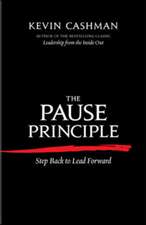Decision Modeling in Policy Management: An Introduction to the Analytic Concepts
Autor Giampiero Beroggien Limba Engleză Hardback – 31 oct 1998
| Toate formatele și edițiile | Preț | Express |
|---|---|---|
| Paperback (1) | 648.42 lei 6-8 săpt. | |
| Springer Us – 31 oct 1998 | 648.42 lei 6-8 săpt. | |
| Hardback (1) | 653.79 lei 6-8 săpt. | |
| Springer Us – 31 oct 1998 | 653.79 lei 6-8 săpt. |
Preț: 653.79 lei
Preț vechi: 769.17 lei
-15% Nou
Puncte Express: 981
Preț estimativ în valută:
125.10€ • 130.97$ • 103.51£
125.10€ • 130.97$ • 103.51£
Carte tipărită la comandă
Livrare economică 05-19 aprilie
Preluare comenzi: 021 569.72.76
Specificații
ISBN-13: 9780792383307
ISBN-10: 0792383303
Pagini: 376
Ilustrații: XXIV, 349 p.
Dimensiuni: 155 x 235 x 26 mm
Greutate: 0.79 kg
Ediția:1999
Editura: Springer Us
Colecția Springer
Locul publicării:New York, NY, United States
ISBN-10: 0792383303
Pagini: 376
Ilustrații: XXIV, 349 p.
Dimensiuni: 155 x 235 x 26 mm
Greutate: 0.79 kg
Ediția:1999
Editura: Springer Us
Colecția Springer
Locul publicării:New York, NY, United States
Public țintă
ResearchCuprins
I: The Problem Solving Process.- 1. The Context of Problem Solving.- 2. Problem Identification: The Elements of Decision Making.- 3. Problem Definition.- 4. Problem Solution.- 5. Summary.- 6. Problems.- II: The Analytic Modeling Process.- 1. From Problem to Model.- 2. Structural Models.- 3. Formal Models.- 4. Resolution Models.- 5. Interactive Complete Strong Preference Ordering.- 6. Summary.- 7. Problems.- III: Descriptive Assessment — Criteria and Weights.- 1. Relative Intensities and Weights.- 2. Hierarchical Decomposition of Criteria.- 3. Aggregation of Criteria.- 4. Summary and Further Readings.- 5. Problems.- IV: Descriptive Assessment — Alternatives and Ranking.- 1. Structural Model of Descriptive Approaches.- 2. Formal and Resolution Models.- 3. Sensitivity Analysis.- 4. Summary and Further Readings.- 5. Problems.- V: Values and Normative Choice.- 1. The Structural Model.- 2. The Formal Model of Value Theory.- 3. The Resolution Model.- 4. Summary and Further Readings.- 5. Problems.- VI: Choices Under Uncertainty.- 1. Decision Making Under Complete Uncertainty.- 2. Decision Making Under Risk.- 3. Summary and Further Readings.- 4. Problems.- VII: Uncertainty and Normative Choice.- 1. The Structural Model for Decision Making Under Uncertainty.- 2. The Formal Model of Utility Theory.- 3. The Resolution Model.- 4. Summary and Further Readings.- 5. Problems.- VIII: Sequential Decision Making.- 1. The Structure of Sequential Decisions.- 2. The Formal Model.- 3. The Resolution Model.- 4. Sensitivity Analysis.- 5. Summary and Further Readings.- 6. Problems.- IX: Multi-Actor Decision Making.- 1. Structural Models in Multi-Actor Settings.- 2. Formal and Resolution Models in Group Decision Making.- 3. Formal and Resolution Models in Conflict Settings.- 4. Summary andFurther Readings.- 5. Problems.- X: Constraint-Based Policy Optimization.- 1. Structural Model.- 2. Formal Models.- 3. Resolution Models.- 4. Summary and Further Readings.- 5. Problems.- Solutions to Problems.- References.- Symbol Index.













